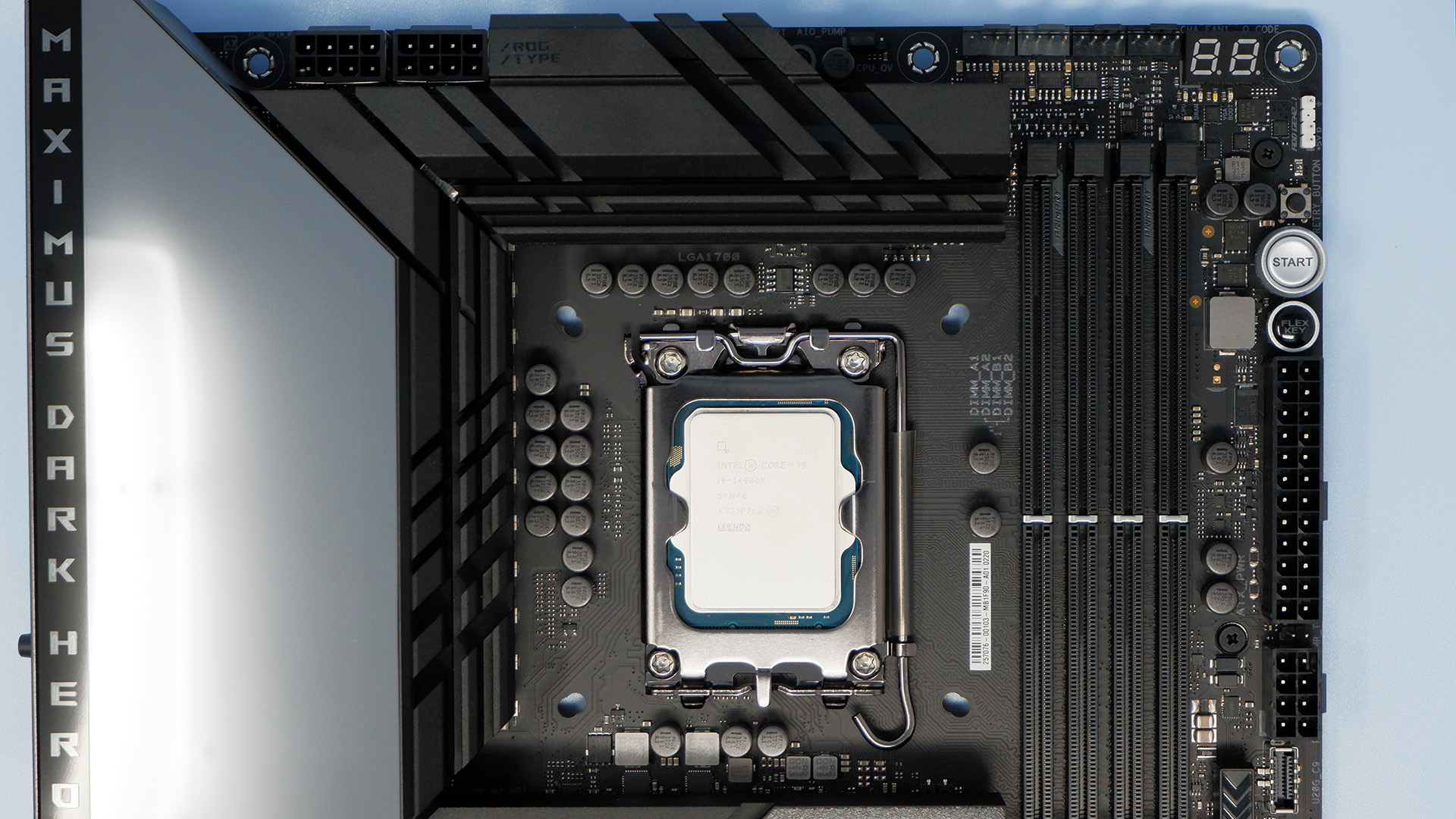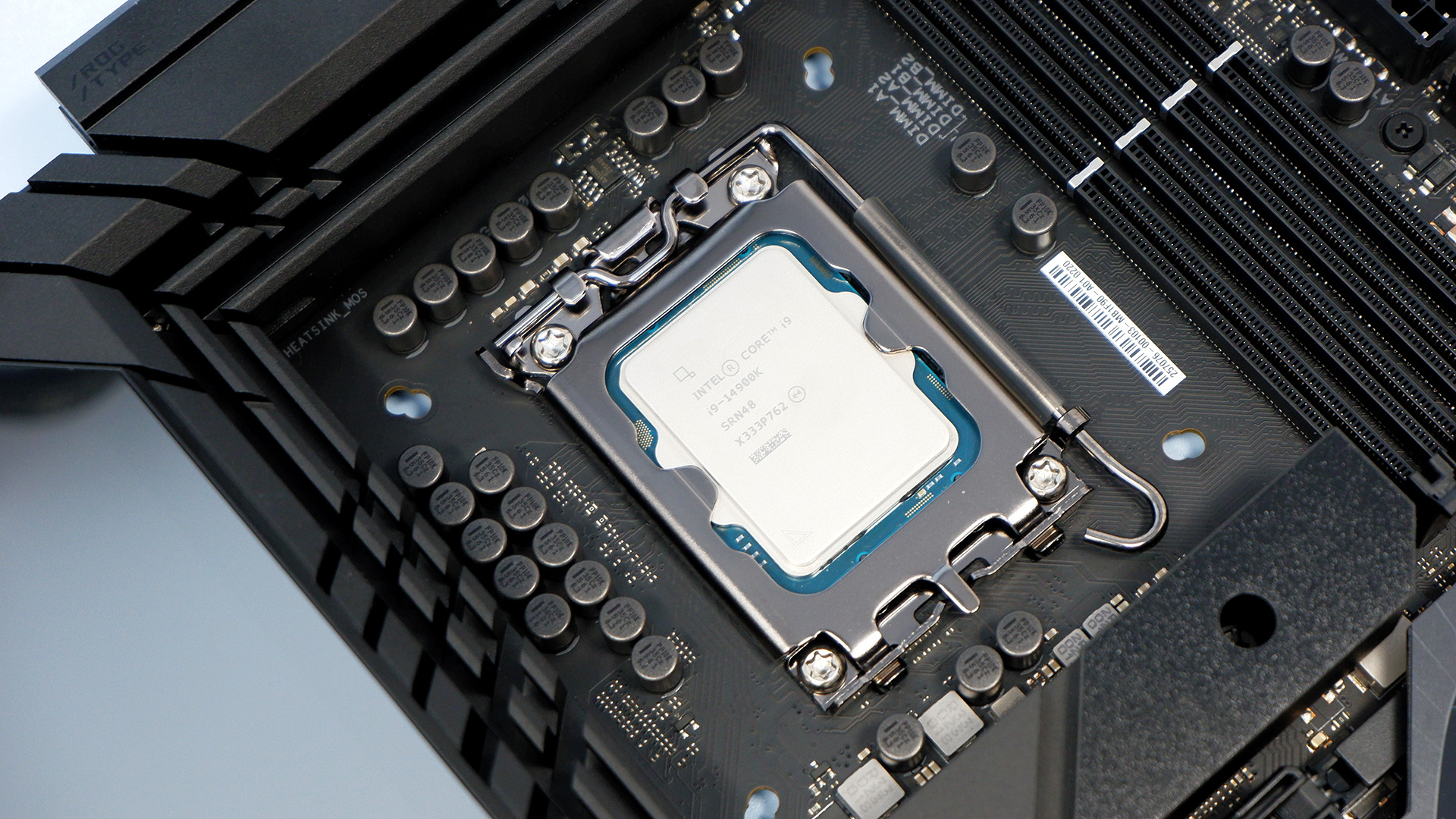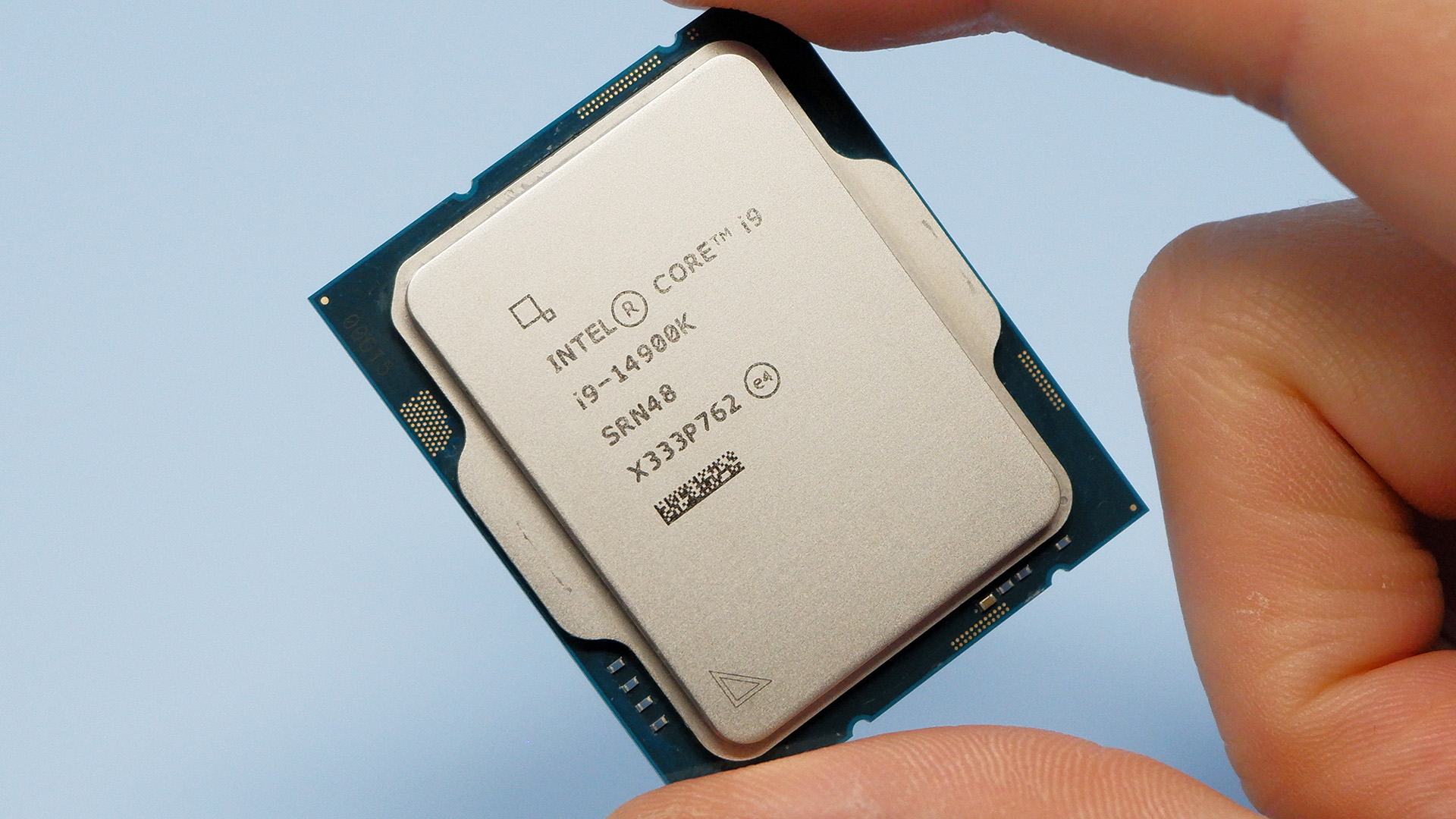Intel instability fix: I've seen no notable impact on game performance with 0x129 patch on the Core i9 14900K
That's good news, but damage done to older chips is irreparable.

If you're using an Intel 13/14th Gen processor, the latest BIOS update for your motherboard is a must-have update. That's because it contains new microcode from Intel, which promises to keep high voltages at bay and reduce the chance of your CPU going to silicon heaven. It appears to successfully keep errant voltage spikes at bay, too. But what, if any, impact does that have on performance?
That's what I'd like to find out. To do so, I've been busy putting an Intel Core i9 14900K through our CPU benchmarking suite. Initially with a BIOS released prior to the fix, using microcode 0x125, and then over again with the latest BIOS and 0x129 microcode.
You can jump straight to those results. But first, let's talk about what that microcode is actually doing.
What is the microcode update doing?
Presumably you're already aware of instability issues plaguing Intel 13/14th Gen CPUs; not only are CPUs tripping up in software, they're being damaged beyond repair. Pretty dreadful stuff, and you'll want to request a replacement chip if you think you're affected by this issue.
The issue, according to Intel, is caused by voltage requests made by the processor to the motherboard. These requests are known as Core VID. These requests are fulfilled by the motherboard, which delivers voltage, known as VCore, to the CPU.
The instability seen on some 13/14th Gen CPUs has been caused by requests for unnecessarily high voltage from the CPU to the motherboard, resulting in degradation to the chip. When combined with transient voltage, i.e. voltage spikes, a processor could request up to 1.55 V or even greater. This has also led to these chips requiring more and more power to remain stable, as the minimum operating voltage, or Vmin, increases. That's a bad cycle to be in, as you might have already guessed.

The latest microcode update promises to nix these voltage request spikes. It limits voltage requests to 1.55 V as a "preventative mitigation for processors not experiencing instability issues."
The biggest gaming news, reviews and hardware deals
Keep up to date with the most important stories and the best deals, as picked by the PC Gamer team.
Note that's in reference to processors not already affected… if your chip is wobbly no microcode fix is going to sort things, you need a new one.
To get the new microcode onto your system, you need to visit the website of the motherboard manufacturer. The update is distributed via a BIOS update. If you don't see one for your motherboard just yet, manufacturers claim they'll have most boards covered by the end of August.
You can read Intel's full statement on the issue here. However, the key takeaway is that Intel claims performance has not been impacted by the microcode update. But to be sure, we've run our own tests anyways. Here are the results.
Performance: 0x129 vs 0x125 microcode
What's the damage?
There's no significant drop in gaming performance across our testing suite with the 0x129 microcode and Intel's 'Performance' Default Power Profile. While I run each benchmark at least three times and take an average from them all, I'd chalk most changes between 0x125 and 0x129 to expected variance between runs. If you were to look for a wider pattern here, the 0x129 results in Baldur's Gate 3 and Factorio suggest a very slight performance dip, though not by enough to be all that statistically significant.
It's a pretty similar story across the benchmarking software. Cinebench R24, Blender 4.2.0, 7Zip, Handbrake and Procyon all delivered results in line with the 0x125 results. For 3DMark Time Spy there appears a larger gap but only for the larger numbers used to present the score—there's still less than a single percent in it.

As for power, I measured the V-core across three runs of Baldur's Gate 3 and throughout a Cinebench R24 multithreaded test run to see if there's any notable difference between behaviours for each microcode version.
In both tests, and comparing the two 'Performance' profile results, there's really not much difference at all. The max V-core was 1.412 for both chips in BG3, and the 0x129 result was actually marginally higher than the 0x125 result in Cinebench R24. Neither is particularly worrying, though the requests actually made to the CPU may differ. I kept an eye on those too, and they appear fine. Though since HWInfo is reporting the average Core VID across all the cores in the CPU, it tends to gloss over the spikiest measurements.
YouTuber Buildzoid has put together a video testing a 14900K with an oscilloscope to measure the VID direct from the chip. In it, he shows the CPU is making much more sensible requests for voltage with the 0x129 microcode than with 0x125. Buildzoid also chalks up the previously high VID requests to ill-advised compensation for Vdroop, or expected Vdroop, which is when the voltage drops off under load.
Generally, the microcode update doesn't appear to have a substantial impact on game performance, power draw or processing capability. Good news if you've just received a brand new Intel processor or PC and you're trying to keep it in tip-top shape.
What's also shown in these charts is that, if you're not overclocking your chip, there's really no benefit to selecting the 'Performance' or 'Maximum' Default Power Profiles. The latter gobbles up a lot more power with very little to show for it. Same goes for Multicore Enhancement. My results show it a little faster at times, even a little slower at others, yet gobbling up consistently higher V-core for a much higher power draw overall.
So, problem solved?
For brand new Intel processors, it would appear as though the cause of the issue leading to instability has been fixed. The high voltage requests from the CPU have seemingly been nixxed with the 0x129 microcode, and in my own testing, and most reports from others, its performance impact has been seen to be negligible.
Though for anyone that has owned a 13/14th Gen CPU for many months, this mitigation won't repair the damage already caused. Worse still, the impact of that damage might not be immediately noticeable, and may cause issues much later down the line. That's where the extended two-year warranty helps out some, though confidence in Intel chips is understandably still shot.
Why wasn't this caught sooner? Why didn't internal validation pick this up before these chips left the fab? Both fair questions in light of the circumstances, though I imagine the first for most 13/14th Gen owners is 'can I get a new one?'
You can, and you should. Intel says "all future products will not be affected by this issue" following "extensive validation", which means any replacement received should be solid enough.

There are still further updates to come, too. The Vmin shift noted by Intel in its latest statement may also require independent mitigation. This is the sort of repair for a symptom of those elevated voltages. Whether you want to hold onto a CPU potentially hit with a Vmin shift… best to get a new one on Intel's dime, in my opinion.
Lastly, any changes to ditch the Intel Default Power Profile from your BIOS may see you actually remove the VID limit of 1.55 V. That means you'd actually be ditching the mitigations wilfully. Now that might be the aim of the game, if you're an overclocker looking to hit some new record under LN2. Though if you aren't afraid of killing your shiny new processor, I'd recommend some caution here. You don't need Intel's help to kill a chip via the BIOS—that's easily achieved through inexperience alone.

Jacob earned his first byline writing for his own tech blog. From there, he graduated to professionally breaking things as hardware writer at PCGamesN, and would go on to run the team as hardware editor. He joined PC Gamer's top staff as senior hardware editor before becoming managing editor of the hardware team, and you'll now find him reporting on the latest developments in the technology and gaming industries and testing the newest PC components.


